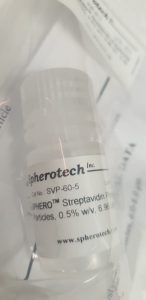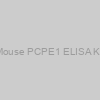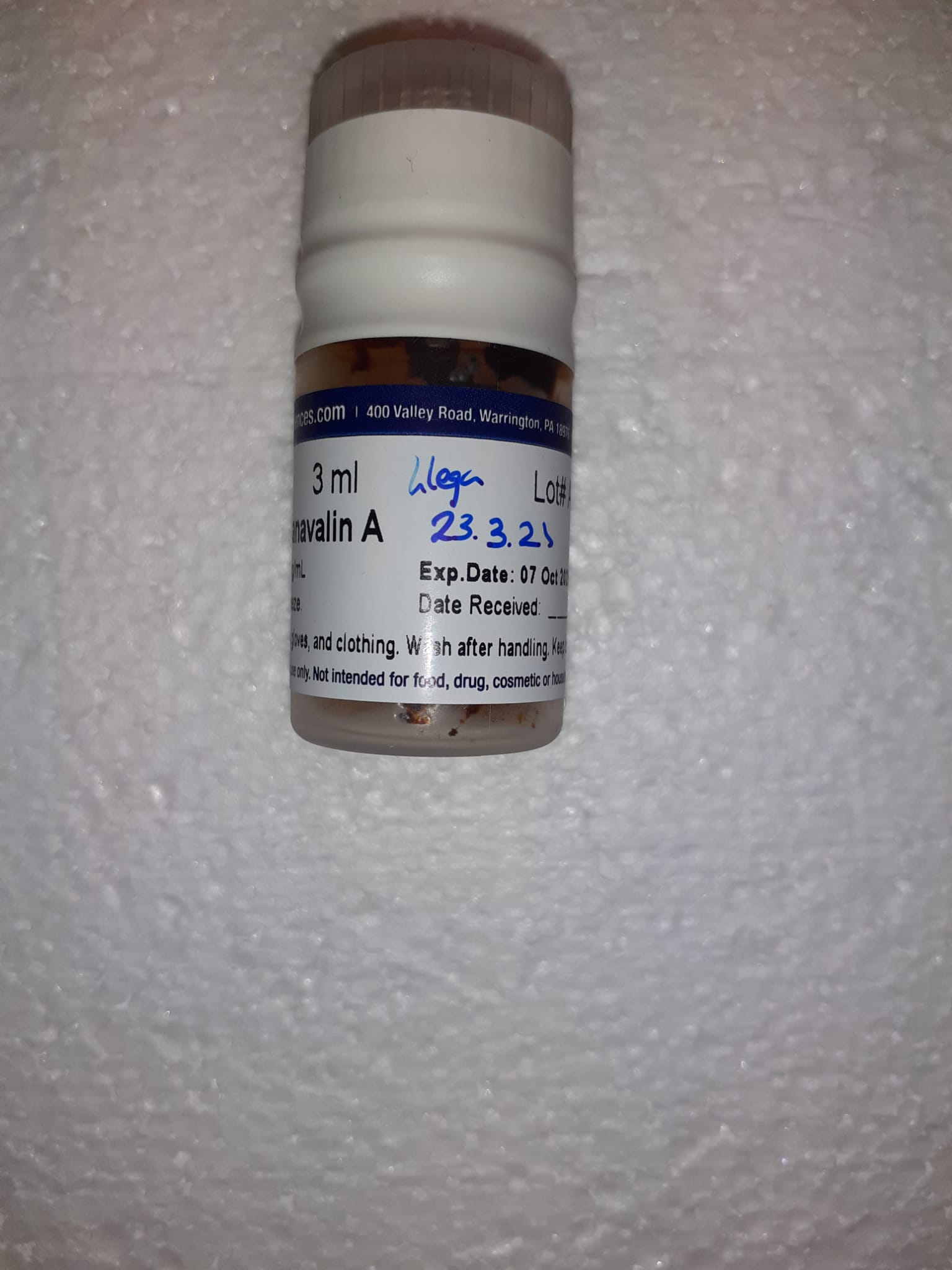Antibodies, Assay Kits, Biology Cells, cDNA, Ctip Antibody, Culture Cells, DNA, DNA Templates, DNA Testing, Elisa Kits, Equipments, Exosomes, Gels, Irak3 Antibody, Isotypes, Medium & Serums, Mmp14 Antibody, Nedd8 Antibody, Olig2 Antibody, Otx2 Antibody, Panel, Particles, PCR, Rfp Antibody, Ria Kits, RNA, Setd2 Antibody, Stat5 Antibody, Vector & Virus, Vitronectin Antibody
Effects of type 2 diabetes and metformin on salivary microbiota in patients with chronic periodontitis
Diabetes is carefully related to periodontitis, nevertheless, the results of sort 2 diabetes and metformin remedy on the salivary microbiota in persistent periodontitis sufferers are nonetheless insufficiently studied. Saliva was collected from ten sufferers with reasonable to extreme persistent periodontitis (CP) and 20 sufferers with sort 2 diabetes mellitus and reasonable to extreme persistent periodontitis (ten sufferers had been newly identified with diabetes with out drug remedy (DM), and ten sufferers had been handled with metformin (CP-DM-MET)).
Whole DNA was extracted. DNA amplicons of the V3-V4 hypervariable areas of the 16S rRNA gene had been generated and subjected to high-throughput sequencing. There was no vital distinction within the variety of the salivary microbiota (Observed_Species, Shannon, Simpson, ACE, and Chao1 index) among the many three teams.
The dominant phyla with relative abundances better than 1% had been Firmicutes, Proteobacteria, Bacteroidota, Actinobacteriota, Fusobacteriota, and Spirochaetota, and no vital distinction was discovered among the many three teams. In contrast with the CP group, the relative abundance of twelve genera was discovered modified in CP-DM, for instance, Aggregatibacter, Unclassified_f_Neisseriaceae, Parvimonas, Erysipelotrichace_UCG-006, Atopobium, and Endomicrobium et al. Metformin remedy may partly restore the abundance of a number of genera in CP-DM, comparable to Acholeplasma, Comamonas.
In contrast with the CP, genus Lactobacillus, Parvimonas, Norank_f_norank_o_Absconditabacteriales_SR1, and Acholeplasma modified considerably in CP-DM-MET. Plaque index (PLI) was positively correlated with Prevotella and Lactobacillus however negatively correlated with Haemophilus, Lautropia, Unclassified_f_Pasteurellaceae, and TM7x. In conclusion, there was a major distinction within the salivary microbiota of sufferers with persistent periodontitis sophisticated by diabetes mellitus. Therapy with metformin partially alleviated the alteration in salivary microbiota attributable to diabetes mellitus.
Prognostic indicators in clinically node-negative malignant main salivary tumours of the parotid: A multicentre expertise
Goals: Nodal metastasis is a vital prognosticator in main parotid cancers. The administration of the clinically node-negative neck is an space missing consensus. This examine investigates the occult nodal metastasis charge, and prognostic indicators in main parotid cancers.
Supplies and strategies: We carried out a multicentre retrospective case observe assessment of sufferers identified and handled surgically with healing intent between 1997 and 2020. Demographic, clinic-pathological and follow-up information was recorded.
Outcomes: After exclusions, 334 sufferers had been included for evaluation, with a median follow-up of 48 months. The general charge of occult lymph node metastasis amongst sufferers present process elective neck dissection was 22.4%, with older age, high-grade and extra superior main tumours being related to greater charges.
On multivariable evaluation, age ≥ 60 years (HR = 2.69, p = 0.004), high-grade tumours (HR = 2.70, p = 0.005) and superior main tumours (pT3-4, HR = 2.06, p = 0.038) had been related to worse general survival. Occult nodal metastasis on last pathology was related to a close-to-significant discount in regional recurrence free survival (HR = 3.18, p = 0.076).
Conclusion: This huge sequence confirms the numerous occult lymph node metastasis charge in main parotid most cancers, and demonstrates the significance of main histology, tumour grade and stage in predicting survival end result. This information helps the usage of elective neck dissection in sufferers with high-risk tumours.
A Comparative Quantitative Evaluation of Salivary Iga and Alpha Amylase in Caries Free and Caries Lively Kids
Goals: The intention of the examine was to evaluate the salivary IgA (immunoglobulin A) and alpha amylase ranges within the unstimulated complete saliva samples of caries-free and caries-active kids and correlate it with the caries standing and age.
Examine design: The salivary IgA and amylase was investigated in 100 kids within the vary of 8-12 years divided in two teams, management group (DMFT and/or deft = 0) and examine group (DMFT/deft rating ≥5). The salivary IgA was measured utilizing package based mostly on two-site sandwich enzyme immunoassay precept and amylase was estimated utilizing the vitro amyl slides.
Outcomes: The imply salivary IgA and amylase ranges within the saliva of the kids within the management group was discovered to be considerably elevated (p=.001 and p=.014 respectively) whereas the connection between salivary IgA and amylase ranges within the saliva of the kids was discovered to be insignificant with the age (p=.392 and p=.306 respectively).
Conclusions: The outcomes indicated that salivary IgA and amylase ranges in saliva elevated considerably in caries free kids and the extent of salivary IgA and alpha amylase has no vital relation with the age of the kids.
The Affiliation of Early Childhood Caries with Salivary Antimicrobial Peptide LL37 and Mutans Streptococci
Objective: This examine goals to find out the relation of salivary LL37 stage and mutans streptococci ranges in early childhood caries (ECC).
Examine design: A case-control examine was carried out in kids ≤71 months previous. Unstimulated complete saliva was collected and the extent of salivary LL37 was measured utilizing an enzyme-linked immunosorbent assay package. The mutans streptococci oral micro organism had been remoted from saliva and recognized utilizing a modified SB-20 tradition medium (SB-20M). Knowledge had been analyzed utilizing descriptive statistics, bivariate, and Spearman’s rank correlation evaluation.
Outcomes: The was a variability of salivary LL37 stage among the many kids and the extent was considerably related to age and races. The median (IQR) worth of salivary LL37 in caries-free (CF) kids was considerably greater 393.50 (580.55) ng/mL in comparison with 172.50 (234.65) ng/mL within the ECC group. The ECC kids exhibited a considerably greater depend of S. mutans and S. sobrinus in comparison with the CF kids. An inverse weak correlation between salivary LL37 and dmft was additionally noticed.
Conclusions: The low salivary LL37 stage and better S. mutans and S. sobrinus depend in ECC supported the protecting position of salivary LL37 in opposition to dental caries. Additional research are required to discover the particular relation between salivary LL37 ranges and dental caries.

Elimination of Massive Wharton’s Duct Salivary Stones Utilizing a CO 2 Laser: A Report of Two Circumstances
Introduction: Salivary stones contained in the Wharton’s duct adjoining to the mylohyoid muscle are sometimes eliminated by a bit of incision of the mouth flooring below native anesthesia. Nevertheless, within the case of comparatively giant salivary stones, a big incision is required, which is usually accompanied by hemorrhage and the necessity for surgical hemostasis, leading to extended surgical procedure. Moreover, troublesome sequelae comparable to ranula and lingual nerve paralysis can happen after surgical procedures.
Strategies: Two sufferers who had comparatively giant salivary stones (>1 cm diameter) within the Wharton’s duct had been underwent incision of the mouth flooring gentle tissues with a CO2 laser.
Outcomes: In each sufferers, the stone was eliminated in a couple of minutes with out inflicting irregular bleeding, nerve damage, or sublingual gland problems and was fully healed.
Conclusion: We report the usefulness and security of the CO2 laser in two sufferers with comparatively giant salivary stones, who underwent profitable surgical removing.
) Human PCPE-1 AssayLite™ Antibody (FITC Conjugate) |
|||
| 32506-05141 | AssayPro | 150 ug | EUR 370 |
) OKRC00795-96W - PCPE-1 ELISA Kit (Human) |
|||
| OKRC00795-96W | Aviva Systems Biology | 96Wells | EUR 600 |
) Human PCPE-1 AssayLite™ Antibody (PerCP Conjugate) |
|||
| 32506-05171 | AssayPro | 150 ug | EUR 410 |
ELISA Kit) Human Procollagen C Proteinase Enhancer 1(PCPE-1)ELISA Kit |
|||
| YLA3898HU-48T | Shanghai YL Biotech | 48T | Ask for price |
ELISA Kit) Human Procollagen C Proteinase Enhancer 1(PCPE-1)ELISA Kit |
|||
| YLA3898HU-96T | Shanghai YL Biotech | 96T | Ask for price |
 Polyclonal Antibody (Mouse)) Procollagen C Proteinase Enhancer 1 (PCPE1) Polyclonal Antibody (Mouse) |
|||
| 4-PAB316Mu01 | Cloud-Clone |
|
|
|
Description: A Rabbit polyclonal antibody against Mouse Procollagen C Proteinase Enhancer 1 (PCPE1) |
|||
 Mouse PCPE1 ELISA Kit |
|||
| EMP0075 | Abclonal | 96Tests | EUR 625.2 |
 Polyclonal Antibody (Mouse), PE) Procollagen C Proteinase Enhancer 1 (PCPE1) Polyclonal Antibody (Mouse), PE |
|||
| 4-PAB316Mu01-PE | Cloud-Clone |
|
|
|
Description: A Rabbit polyclonal antibody against Mouse Procollagen C Proteinase Enhancer 1 (PCPE1). This antibody is labeled with PE. |
|||
 ELISA Kit) Mouse PCPE1(Procollagen C Proteinase Enhancer 1) ELISA Kit |
|||
| ELK3765-48T | ELK Biotech | 48T | Ask for price |
|
Description: The test principle applied in this kit is Sandwich enzyme immunoassay. The microtiter plate provided in this kit has been pre-coated with an antibody specific to Mouse PCPE1. Standards or samples are added to the appropriate microtiter plate wells then with a biotin-conjugated antibody specific to Mouse PCPE1. Next, Avidin conjugated to Horseradish Peroxidase (HRP) is added to each microplate well and incubated. After TMB substrate solution is added, only those wells that contain Mouse PCPE1, biotin-conjugated antibody and enzyme-conjugated Avidin will exhibit a change in color. The enzyme-substrate reaction is terminated by the addition of sulphuric acid solution and the color change is measured spectrophotometrically at a wavelength of 450nm ± 10nm. The concentration of Mouse PCPE1 in the samples is then determined by comparing the OD of the samples to the standard curve. |
|||
 ELISA Kit) Mouse PCPE1(Procollagen C Proteinase Enhancer 1) ELISA Kit |
|||
| ELK3765-96T | ELK Biotech | 96T | Ask for price |
|
Description: The test principle applied in this kit is Sandwich enzyme immunoassay. The microtiter plate provided in this kit has been pre-coated with an antibody specific to Mouse PCPE1. Standards or samples are added to the appropriate microtiter plate wells then with a biotin-conjugated antibody specific to Mouse PCPE1. Next, Avidin conjugated to Horseradish Peroxidase (HRP) is added to each microplate well and incubated. After TMB substrate solution is added, only those wells that contain Mouse PCPE1, biotin-conjugated antibody and enzyme-conjugated Avidin will exhibit a change in color. The enzyme-substrate reaction is terminated by the addition of sulphuric acid solution and the color change is measured spectrophotometrically at a wavelength of 450nm ± 10nm. The concentration of Mouse PCPE1 in the samples is then determined by comparing the OD of the samples to the standard curve. |
|||
 Polyclonal Antibody (Mouse), APC) Procollagen C Proteinase Enhancer 1 (PCPE1) Polyclonal Antibody (Mouse), APC |
|||
| 4-PAB316Mu01-APC | Cloud-Clone |
|
|
|
Description: A Rabbit polyclonal antibody against Mouse Procollagen C Proteinase Enhancer 1 (PCPE1). This antibody is labeled with APC. |
|||
 Polyclonal Antibody (Mouse), Cy3) Procollagen C Proteinase Enhancer 1 (PCPE1) Polyclonal Antibody (Mouse), Cy3 |
|||
| 4-PAB316Mu01-Cy3 | Cloud-Clone |
|
|
|
Description: A Rabbit polyclonal antibody against Mouse Procollagen C Proteinase Enhancer 1 (PCPE1). This antibody is labeled with Cy3. |
|||
 Polyclonal Antibody (Mouse), FITC) Procollagen C Proteinase Enhancer 1 (PCPE1) Polyclonal Antibody (Mouse), FITC |
|||
| 4-PAB316Mu01-FITC | Cloud-Clone |
|
|
|
Description: A Rabbit polyclonal antibody against Mouse Procollagen C Proteinase Enhancer 1 (PCPE1). This antibody is labeled with FITC. |
|||
 Polyclonal Antibody (Mouse), HRP) Procollagen C Proteinase Enhancer 1 (PCPE1) Polyclonal Antibody (Mouse), HRP |
|||
| 4-PAB316Mu01-HRP | Cloud-Clone |
|
|
|
Description: A Rabbit polyclonal antibody against Mouse Procollagen C Proteinase Enhancer 1 (PCPE1). This antibody is labeled with HRP. |
|||
 Polyclonal Antibody (Human, Mouse)) Procollagen C Proteinase Enhancer 1 (PCPE1) Polyclonal Antibody (Human, Mouse) |
|||
| 4-PAB316Hu02 | Cloud-Clone |
|
|
|
Description: A Rabbit polyclonal antibody against Human, Mouse Procollagen C Proteinase Enhancer 1 (PCPE1) |
|||
) ELISA kit for Mouse PCPE1 (Procollagen C Proteinase Enhancer 1) |
|||
| ELK3765 | ELK Biotech | 1 plate of 96 wells | EUR 518.4 |
|
Description: A sandwich ELISA kit for detection of Procollagen C Proteinase Enhancer 1 from Mouse in samples from blood, serum, plasma, cell culture fluid and other biological fluids. |
|||
 Protein) Mouse Procollagen C Proteinase Enhancer 1 (PCPE1) Protein |
|||
| 20-abx068670 | Abbexa |
|
|
 Polyclonal Antibody (Human, Mouse), APC) Procollagen C Proteinase Enhancer 1 (PCPE1) Polyclonal Antibody (Human, Mouse), APC |
|||
| 4-PAB316Hu02-APC | Cloud-Clone |
|
|
|
Description: A Rabbit polyclonal antibody against Human, Mouse Procollagen C Proteinase Enhancer 1 (PCPE1). This antibody is labeled with APC. |
|||
 Polyclonal Antibody (Human, Mouse), Cy3) Procollagen C Proteinase Enhancer 1 (PCPE1) Polyclonal Antibody (Human, Mouse), Cy3 |
|||
| 4-PAB316Hu02-Cy3 | Cloud-Clone |
|
|
|
Description: A Rabbit polyclonal antibody against Human, Mouse Procollagen C Proteinase Enhancer 1 (PCPE1). This antibody is labeled with Cy3. |
|||
 Polyclonal Antibody (Human, Mouse), HRP) Procollagen C Proteinase Enhancer 1 (PCPE1) Polyclonal Antibody (Human, Mouse), HRP |
|||
| 4-PAB316Hu02-HRP | Cloud-Clone |
|
|
|
Description: A Rabbit polyclonal antibody against Human, Mouse Procollagen C Proteinase Enhancer 1 (PCPE1). This antibody is labeled with HRP. |
|||
 Polyclonal Antibody (Human, Mouse), PE) Procollagen C Proteinase Enhancer 1 (PCPE1) Polyclonal Antibody (Human, Mouse), PE |
|||
| 4-PAB316Hu02-PE | Cloud-Clone |
|
|
|
Description: A Rabbit polyclonal antibody against Human, Mouse Procollagen C Proteinase Enhancer 1 (PCPE1). This antibody is labeled with PE. |
|||
 Polyclonal Antibody (Mouse), APC-Cy7) Procollagen C Proteinase Enhancer 1 (PCPE1) Polyclonal Antibody (Mouse), APC-Cy7 |
|||
| 4-PAB316Mu01-APC-Cy7 | Cloud-Clone |
|
|
|
Description: A Rabbit polyclonal antibody against Mouse Procollagen C Proteinase Enhancer 1 (PCPE1). This antibody is labeled with APC-Cy7. |
|||
 CLIA Kit) Mouse Procollagen C Proteinase Enhancer 1 (PCPE1) CLIA Kit |
|||
| 20-abx492631 | Abbexa |
|
|
 ELISA Kit) Mouse Procollagen C Proteinase Enhancer 1 (PCPE1) ELISA Kit |
|||
| DLR-PCPE1-Mu | DL Develop | 96T | EUR 454 |
|
Description: serum, plasma or other biological fluids. |
|||
 ELISA Kit) Mouse Procollagen C Proteinase Enhancer 1 (PCPE1) ELISA Kit |
|||
| DLR-PCPE1-Mu-48T | DL Develop | 48T | EUR 609.6 |
|
Description: A sandwich quantitative ELISA assay kit for detection of Mouse Procollagen C Proteinase Enhancer 1 (PCPE1) in samples from serum, plasma or other biological fluids. |
|||
 ELISA Kit) Mouse Procollagen C Proteinase Enhancer 1 (PCPE1) ELISA Kit |
|||
| DLR-PCPE1-Mu-96T | DL Develop | 96T | EUR 793.2 |
|
Description: A sandwich quantitative ELISA assay kit for detection of Mouse Procollagen C Proteinase Enhancer 1 (PCPE1) in samples from serum, plasma or other biological fluids. |
|||
 ELISA Kit) Mouse Procollagen C Proteinase Enhancer 1 (PCPE1) ELISA Kit |
|||
| DL-PCPE1-Mu | DL Develop | 96T | EUR 432 |
|
Description: serum, plasma or other biological fluids. |
|||
 ELISA Kit) Mouse Procollagen C Proteinase Enhancer 1 (PCPE1) ELISA Kit |
|||
| EK15993 | SAB | 96Т | EUR 768 |
 ELISA Kit) Mouse Procollagen C Proteinase Enhancer 1 (PCPE1) ELISA Kit |
|||
| 20-abx154509 | Abbexa |
|
|
 ELISA Kit) Mouse Procollagen C Proteinase Enhancer 1 (PCPE1) ELISA Kit |
|||
| RD-PCPE1-Mu-48T | Reddot Biotech | 48T | EUR 443.3 |
|
Description: serum, plasma and other biological fluids. |
|||

